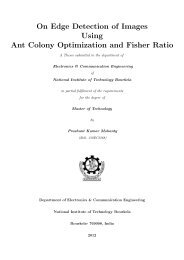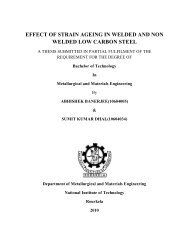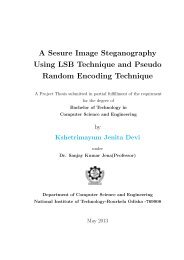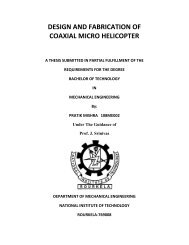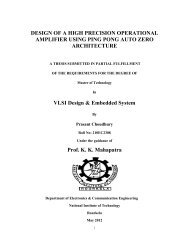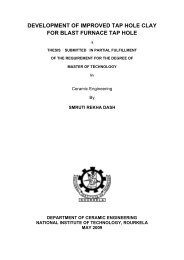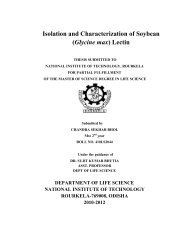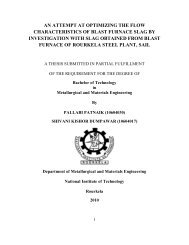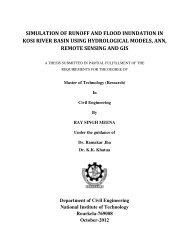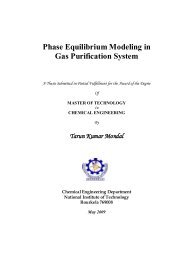analysis of transient heat conduction in different geometries - ethesis ...
analysis of transient heat conduction in different geometries - ethesis ...
analysis of transient heat conduction in different geometries - ethesis ...
Create successful ePaper yourself
Turn your PDF publications into a flip-book with our unique Google optimized e-Paper software.
We consider the <strong>heat</strong> <strong>conduction</strong> <strong>in</strong> a tube <strong>of</strong> diameter 2R, <strong>in</strong>itially at a uniform temperature T0,<br />
hav<strong>in</strong>g <strong>heat</strong> generation (G) <strong>in</strong>side it and exchang<strong>in</strong>g <strong>heat</strong> by convection at another side. A<br />
constant <strong>heat</strong> transfer coefficient (h) is assumed on the other side and the ambient temperature<br />
(T∞) is assumed to be constant. Assum<strong>in</strong>g constant physical properties, k and α, the generalized<br />
<strong>transient</strong> <strong>heat</strong> <strong>conduction</strong> valid for slab, cyl<strong>in</strong>der and sphere can be expressed as:<br />
Fig 3.4: Schematic <strong>of</strong> cyl<strong>in</strong>der with <strong>heat</strong> generation<br />
∂T 1 ∂ ⎛ m ∂T<br />
⎞<br />
= α r G<br />
m ⎜ ⎟+<br />
∂t r ∂r⎝ ∂r<br />
⎠ (3.73)<br />
Where, m = 0 for slab, 1 and 2 for cyl<strong>in</strong>der and sphere, respectively. Here we have considered<br />
tube geometry. Putt<strong>in</strong>g m=1, the above equation reduces to<br />
Boundary conditions<br />
2<br />
∂T ∂ T<br />
= α + G 2<br />
∂t ∂ r<br />
(3.74)<br />
∂ T<br />
k = 0<br />
∂ r at r = 0<br />
(3.75)<br />
31





